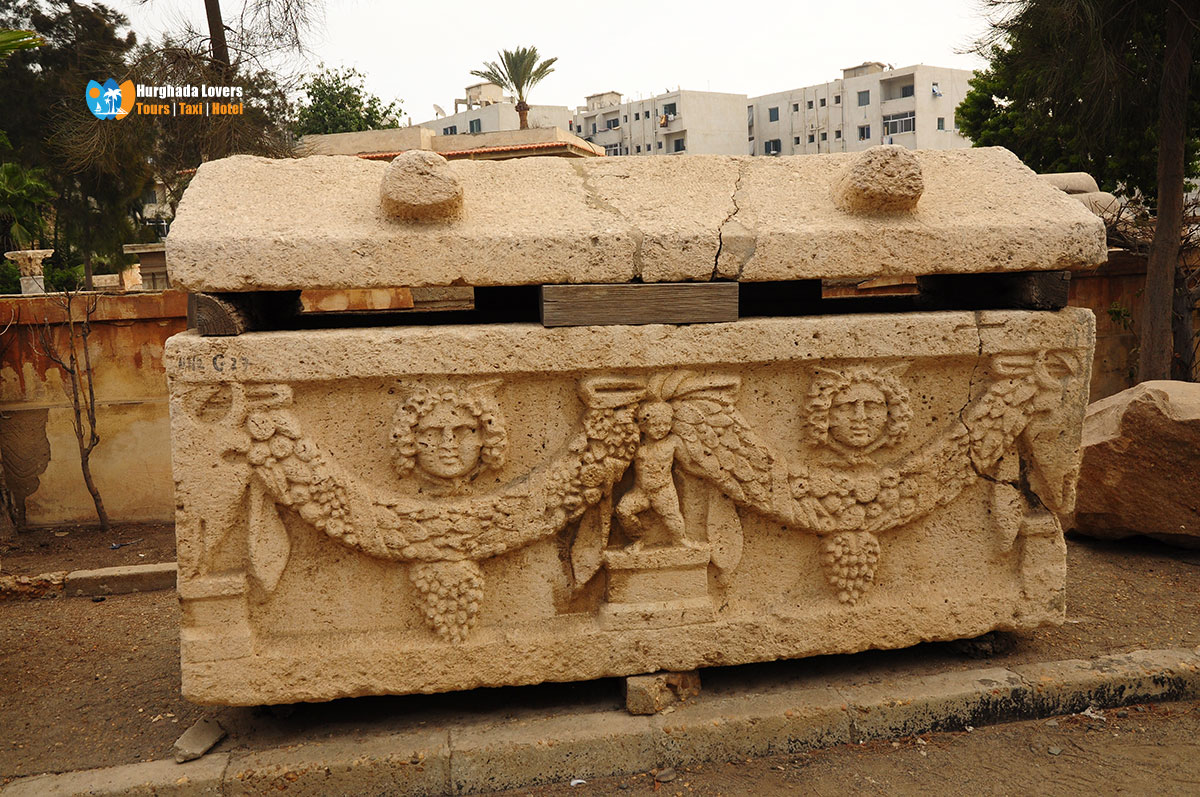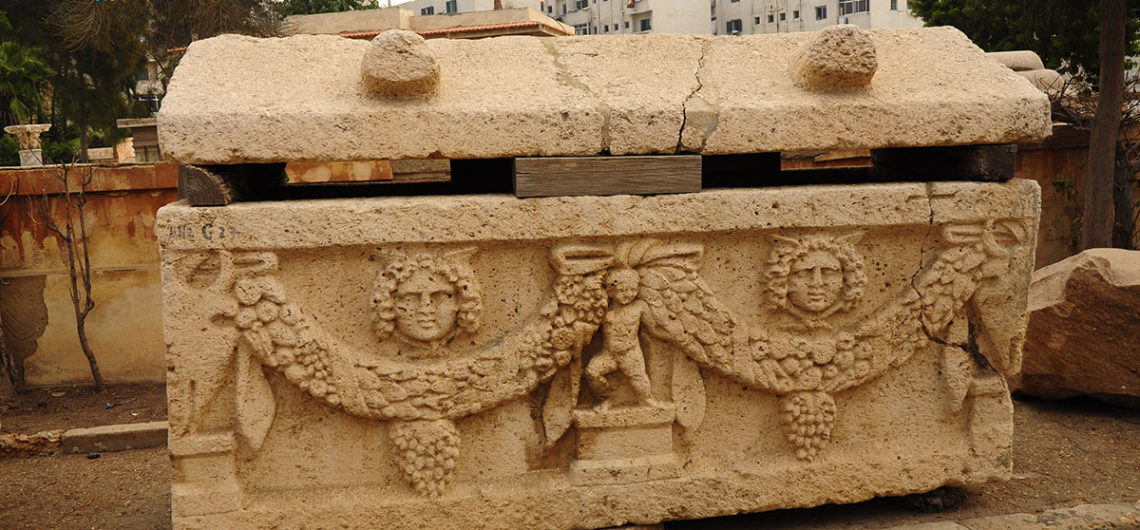Pharaonic Monuments in Alexandria Egypt | Facts Pharaonic Temples & History Pharaonic Tombs
The 15 Best Sights & Historical Landmarks in Alexandria Tours.
The Pharaonic Monuments in Alexandria Egypt | the secrets and History Of Egyptian of the construction of all the Pharaonic temples and archaeological tombs discovered in Alexandria on the Mediterranean coast to tell us the story of the civilization of Roman, Coptic, Greek and Pharaonic Civilization and the secrets you never knew before and more Things to Do in Egypt.
Hurghada lovers Offer Luxury Hurghada to Pyramids Tours | El Gouna to Pyramids Tours | Makadi bay to Pyramids Tours | Sahl Hasheesh to Pyramids Tours | Soma bay to Pyramids Tours .
Things to do in Alexandria
Tourist Attractions in Alexandria
Pharaonic Monuments in Alexandria
Monuments of Marina in El Alamein
Islamic Tourist attractions in Alexandria
Citadel of Qaitbay in Alex
Coptic Tourist attractions in Alexandria
Museums in Alexandria
Activities in Alexandria
Places to Visit in Alexandria
Best Time to Visit Alexandria
Temple of Caesarion – Caesareum of Alexandria
The history of the construction of the Temple of Caesarion, the most important archaeological Pharaonic Monuments in Alexandria.
The Temple of Caesarion – Secrets that you never knew before about the history of the construction of the ancient temple to tell us the story of the queens of ancient Egypt and the kings of the Pharaonic civilization in the Ptolemaic era.
The temple was built by the Pharaonic queen Cleopatra VII in Ptolemaic times and was named after Mark Antony, and two obelisks were added in the names of the kings of the pharaohs King Thutmosis III and King Ramses II “Egyptian Pharaohs kings” in addition to the name King Seti I, and they were brought from the temple of Ain Shams (Heliopolis) of Cairo at the time.
Emperor August I of Roman times restored the temple, but unfortunately the obelisk of Thutmose III was moved to London in 1877 AD on the Thames and the obelisk of King Ramses II and King Seti I was transferred to Central Park in New York in 1879 AD.
Colossi and columns have been found under the bases of the two obelisks, as well as texts and writings in Latin and Greek showing that both obelisks were built during the reign of Emperor Augustus in the eighth year.
The price of entrance tickets to the tombs of Kom Al-Shoqafa
Ticket prices start at 20 Egyptian pounds per person, and the ticket price is 5 pounds for an Egyptian student,
The price of a kom Al-Shoqafa ticket
80 Egyptian pounds for foreign tourists and 40 pounds for a foreign student
Dates of visit of the tombs of Mostafa Kamel
08:00 to 17:00
Entrance ticket prices:
Ticket price for Egyptians = 10 Egyptian pounds
Ticket price for Egyptian student = 5 Egyptian pounds
Ticket price for foreign tourists = 40 Egyptian pounds
Ticket price for a foreign student = 20 Egyptian pounds
Visit dates: 08:00 to 17:00
Ticket prices for the archaeological tombs of Al-Shatebi:
Ticket price for Egyptians = 10 Egyptian pounds
Ticket price for the Egyptian student = 5 Egyptian pounds
Ticket price for foreign tourists = 40 Egyptian pounds
Ticket price for a foreign student = 20 Egyptian pounds
Entrance fee to the tombs of El-Anfoushi
Ticket prices start at 10 Egyptian pounds per person and the ticket price is 5 pounds for an Egyptian student,
Ticket price to Anfushi Cemetery
40 Egyptian pounds for foreign tourists and 20 pounds for a foreign student
Waterfall tanks
The history of water reservoirs in Alexandria is the most important Pharaonic Monuments in Alexandria of Roman times that were discovered next to the tombs of El-Anfushi in Alexandria in Egypt.
Several 4 water tanks were discovered under buildings in Alexandria, where one was found under the mosque of Nabi Daniel, the second underground on the martyr salah Mustafa Street and the third was discovered in the well of the column of the valley and the latter the reservoir of the waterfall in the courtyard of the tomb of El-Anfushi.
The water reservoir known as Saharig El-Shallalat is the largest, square in shape and 3 stories, divided into 5 sections with granit columns and different shapes for each section with crowns bearing Christian inscriptions and symbols from ancient Roman times.
Monuments of Al-Bardisi in Alexandria
The most important monuments in Egypt from Roman times. Find out when the most important tombs and cemeteries of ancient Alexandria were built and what are the dates of the visit and the prices of entrance tickets to the Roman temple.
The Roman ruins of Bardisi were discovered in 1929 AD under the mosque of Sidi Abdel Razek al-Wafa’y on Al-Bardisi Street, a number of 4 bases of columns were found in limestone marble covered with jade and designed in the style of the Ayubids, the distance built each base 5 meters and there are above two pillars without capitals in red granit.
Archaeologists believe that these columns and bases are remnants of an ancient Roman temple in the ruins of Bardisi.
Dates to visit the effects of al-Bardisi:
09h00 to 17h00
Entrance ticket prices:
Ticket price for Egyptians = 10 Egyptian pounds
Ticket price for Egyptian student = 5 Egyptian pounds
Ticket price for foreign tourists = 40 Egyptian pounds
Ticket price for a foreign student = 20 Egyptian pounds
The Roman baths in Alexandria
The date of the establishment of the oldest baths of ancient Egypt & Pharaonic Monuments in Alexandria. Valuable information about the baths discovered in the area of Kom Al-Dekka and Abusir, how was the mixed architectural design and more.
The Roman baths in Alexandria were divided into two parts, the private bathrooms are foot baths, where the baths is a deep stone basin for washing hands, legs and disinfection and it had a number of 1-2 stairs and bathtubs and was only found in the palaces and houses of the rich and made of granit and basalt.
It is strange that if some people turn Turkish baths into a bathtub into a coffin and make a granit shell, you can see this type at the Greco-Roman Museum in the tourist city of Alexandria.
The second type of Roman baths in Alexandria is the public baths, where it was scattered everywhere and was made of red bricks, consisting of 3 chambres including cold shower rooms, a hot shower room, a hammam or a fire room in addition to providing boilers to turn water into steam to relax and bathe at the same time.
The floors of the hot shower room were built with a high floor design, short columns and stone slabs, the mission of which is to allow increased heat leakage to ventilate the place.
A large group of Roman baths was discovered in Alexandria in the area of Kom Al-Dekkah, Abu Sir East and Abu Qir.
Temple of El-Ras Al-Soda in Alexandria
The most important ancient pharaonic temples of the Roman era. The date of the establishment of the most important tourist attractions & Pharaonic Monuments in Alexandria in Egypt and what are the secrets of its construction.
Located on the agricultural road in the Abu Qir area leading to Alexandria Park, the temple was discovered in 1936 AD during excavations by accident and is re-erected in the late 2nd or early 3rd century AD.
It was discovered that the reason for the construction was that the Roman knight Isador presented it as an offering and thanked Lady Isis after healing her foot after an accident while driving his war wheel.
The reason why you call the temple the temple of El-Ras Al-Soda because it is located in an area known as the area of El-Ras Al-Soda, you will see the temple is a high platform in the staircase to the hall with 4 white marble columns and some inscriptions of the Greek text to thank Prince Isador for the gods.
Three statues of the goddess Isis, a statue of Herpocrates and a statue of Hormanois, as well as 2 statues of Osiris and Canop, and the discovery of a small altar were found.
Behind the temple you will find remains of dilapidated buildings and houses that served as the residence of the temple priests, and all the statues of the temple have been transferred to the Greco-Roman Museum of Alexandria, where it is now a very dilapidated temple.
FAQ Things to Do in Egypt & Things to Do in Alexandria:
Author & Writer The Pharaonic Monuments in Alexandria: Tamer Ahmed Abd elfatah Yousif


